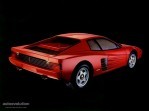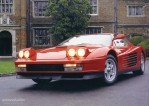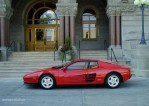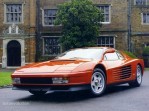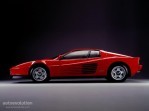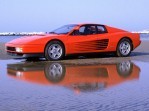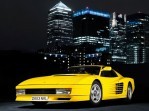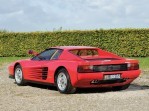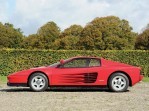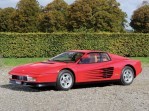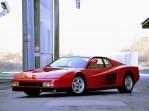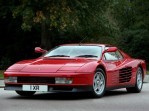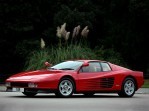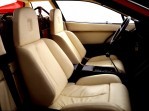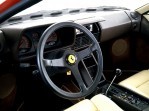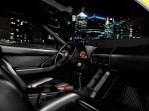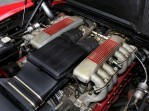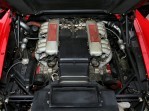Body style: Coupé (two-door)
Segment: Exotic
Production years: 1984, 1985, 1986, 1987, 1988, 1989, 1990, 1991
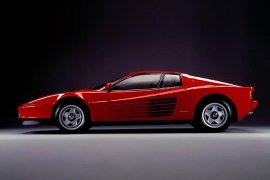 22 Photos
22 PhotosThe Ferrari Testarossa was one of the most iconic models built by the Italian carmaker, a legendary car due to its complex design and strange engine.
Ferrari used the name Testarossa (red-head) for vehicles with two overhead camshafts. Over time, that technical detail became so common that it didn't worth mentioning it over time. In 1984, when the car was introduced, it was still a great achievement. For that engine, Pininfarina built a special bodywork.
The Testarossa was instantly recognizable due to its side air-intakes for the engine. The long slats that were continued on the door panels channeled the air into the radiators to cool the engine. But more than their functional value, their look was even more important and gave the car a specific stance. At the front, the pop-up headlights and the black grille at the lower part of the bumper were specific car signatures. At the back, Pininfarina installed the taillights behind a black grille with horizontal slats. Unlike many other Ferraris, the Testarossa's taillights were big and squared.
Inside, the designer used leather for most of the panels. The designer wrapped the door panels, the dashboard, the sun visors, and the headliner with leather apart from the bucket seats. The gear-stick popped out from the floor, without a proper center console to surround it. A small storage compartment found its way between the occupants.
The monster, boxer-12 engine was based on the 1975 Formula 1 unit. Its architecture allowed the car to have a very low gravity center to increase the cornering speed. It was paired to a standard 5-speed manual gearbox.
FERRARI Testarossa 1984, 1985, 1986, 1987, 1988, 1989, 1990, 1991
- 4.9L B12 5MT (390 HP)
FERRARI Testarossa
4.9L B12 5MT (390 HP)
ENGINE SPECS - 4.9L B12 5MT (390 HP) | |
|---|---|
| Cylinders: | B12 |
| Displacement: | 4942 cm3 |
| Power: | 287 KW @ 6300 RPM 390 HP @ 6300 RPM 385 BHP @ 6300 RPM |
| Torque: | 361 lb-ft @ 4500 RPM 490 Nm @ 4500 RPM |
| Fuel System: | Electronic Fuel Injection |
| Fuel: | Gasoline |
PERFORMANCE SPECS | |
|---|---|
| Top Speed: | 181 mph (291 km/h) |
| Acceleration 0-62 Mph (0-100 kph): | 5.4 s |
TRANSMISSION SPECS | |
|---|---|
| Drive Type: | Rear Wheel Drive |
| Gearbox: | 5-Speed manual |
BRAKES SPECS | |
|---|---|
| Front: | Ventilated Discs |
| Rear: | Ventilated Discs |
TIRES SPECS | |
|---|---|
| Tire Size: | 240/45 VR415 TRX |
DIMENSIONS | |
|---|---|
| Length: | 176.6 in (4486 mm) |
| Width: | 77.8 in (1976 mm) |
| Height: | 44.5 in (1130 mm) |
| Front/rear Track: | 59.8/65.4 in (1,519/1,661 mm) |
| Wheelbase: | 100.4 in (2550 mm) |
| Ground Clearance: | 5.5 in (140 mm) |
| Aerodynamics (Cd): | 0.36 |
WEIGHT SPECS | |
|---|---|
| Unladen Weight: | 3320 lbs (1506 kg) |
FUEL ECONOMY (NEDC) | |
|---|---|
| Combined: | 15.6 mpg US (15.1 L/100Km) |
| CO2 Emissions: | 371 g/km |

